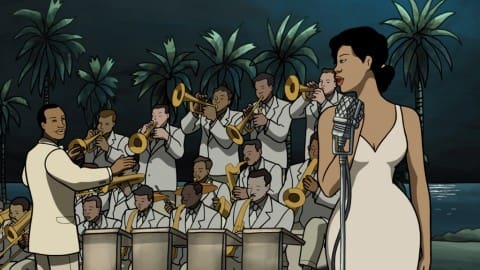

Spanish Animation “Chico & Rita” Goes After Oscars & International Market
The recent pre-selection of two Spanish feature-length films for the 2011 Oscars, set for February, is yet more confirmation of the sweet moment the Spanish animation sector is currently enjoying. Chico & Rita and Arrugas are thus repeating the pre-selection success of Planet 51 and El Lince Perdido (The Lost Lynx) two years ago. Except for America, few countries ever manage to get more than one production on the list from which the nomination finalists will emerge. Spain will also be represented at the Oscars by three animated short films — Birdboy, Vicenta and Daisy Cutter— which demonstrates the creative depth of the upcoming generation on an international level.
What really stands out is that Arrugas and Chico & Rita are aimed at adult audiences, a market segment where animated films — at least until now — were a tough sell vis-á-vis the overwhelming hegemony of children and family-oriented cartoons. Might this be construed as a trend change? “More than a trend, it has been the result of the excellent work of the professionals in the sector that has attracted the finest filmmakers and helped them discover the power of animated narrative –Â Fernando Trueba with Chico & Rita, Cesc Gay with Las Tres Mellizas y la Máquina del Mundo (The Three Twin Sisters and the Machine of the World) and Juan José Campanella with Metegol (Goalscorer) are the best examples of this,” said Carlos Biern, President of Diboos, the Federation of Animation Producers’ Associations.
According to Manuel Cristóbal, a producer with film hits to his credit such as El Bosque Encantado (The Enchanted Forest) and El Lince Perdido and the man responsible for Arrugas, “the borders for animation have been blown up and now we find not only movies for family audiences but also animated dramas, such as Arrugas, and adventure movies being made using motion-capture techniques, such as Tintin. This is not a coincidence, and it shows that animation is a strategic sector with a brilliant future.” Perro Verde Films, the production company behind Arrugas is a long-time member of DIBOOS, under whose aegis some 80% of all Spanish animation is produced. Likewise, DIBOOS encourages state institutions to place further belief in a sector “where they’re shaking the hand of great creative talent and entrepreneurial know-how that is creating a product that makes most of its money abroad, that generates stable, highly-qualified employment and that is very technologically and innovatively intense.” Chelo Loureiro, Vice President of Diboos for Film, comments that “the pre-selection of Arrugas and Chico & Rita for the Oscars is nothing more than further proof of the prestige of the Spanish animation industry, which is currently producing over 20 feature-length films for the big screen and thousands of hours of series for TV, apps and videogames. Absolutely all of this production is being pre-sold on an international level because both the quality of the story-telling and the animation techniques prove we’re good.”
And it’s true that, now, it’s no longer the exception when Spanish series and movies conquer foreign markets, even American markets, which have traditionally been difficult to gain access to for European products in general. To cite just a few examples, on the heals of the tremendous global success of Pocoyó, companies such as BRB, IMIRA and VODKA have managed to produce animated series that have sold in over 150 countries around the world and that have been embraced by huge audiences, leading to million-dollar commercial tie-ins and licensing agreements that have given rise to wide-spread industrial and commercial commitments employing thousands of qualified professionals. And apart from this type of entrepreneurial success, Spanish animation has produced tremendous enthusiasm around the globe simply due to the level of its creativity, as can be seen in the two candidatures for the Oscars or the 11 projects selected for the past edition of the Cartoon Forum, animation’s premier event.
The report that has been presented by FAPAE over the last three years, Madrid de Cine-Spanish Film Screenings, clearly states that Spanish productions continue to earn more money abroad than at home: In 2010, Spanish cinema made 90 million euros outside of Spain and had a total audience of 16.3 million viewers.
For Pedro Pérez, President of FAPAE (Federation of Spanish Audiovisual Producers’ Associations), “These nominations corroborate the success and international projection of Spanish fiction and, concretely, of Spanish animation. The Oscar candidatures of Arrugas and Chico & Rita are recognition of the talent and innovative work that is being carried out at the heart of these animation companies.”


